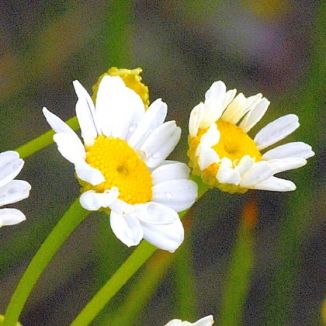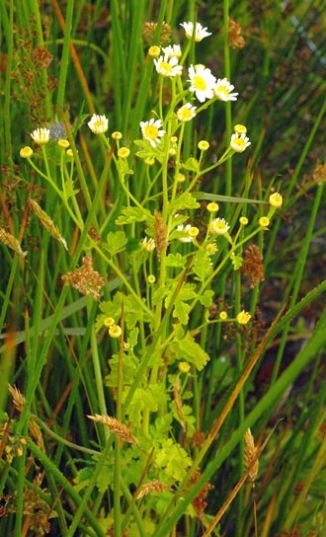This is a strongly aromatic perennial which bears daisy-like flower-heads and is commonly found in many different habitats, most of them near habitation. Stiffly erect, it is well branched towards the top of the stems and carries its flower-heads in flat-topped clusters. The flowers (12-20mm across) have white radiating ray-florets, the inner disc-florets being bright yellow and they bloom from June to September. The leaves are bright green, have broad lobes and are mainly stalked. This plant was introduced from S.E. Europe and is generally considered to be a garden escape which has naturalised in Ireland. There is also a double flowered version which can be found growing in gardens. Feverfew belongs to the family Asteraceae.
I first recorded this plant in my own garden in Dalkey, Co Dublin in 1976 and photographed it at Derrynane, Co Kerry in 2008.
If you are satisfied you have correctly identified this plant, please submit your sighting to the National Biodiversity Data Centre



